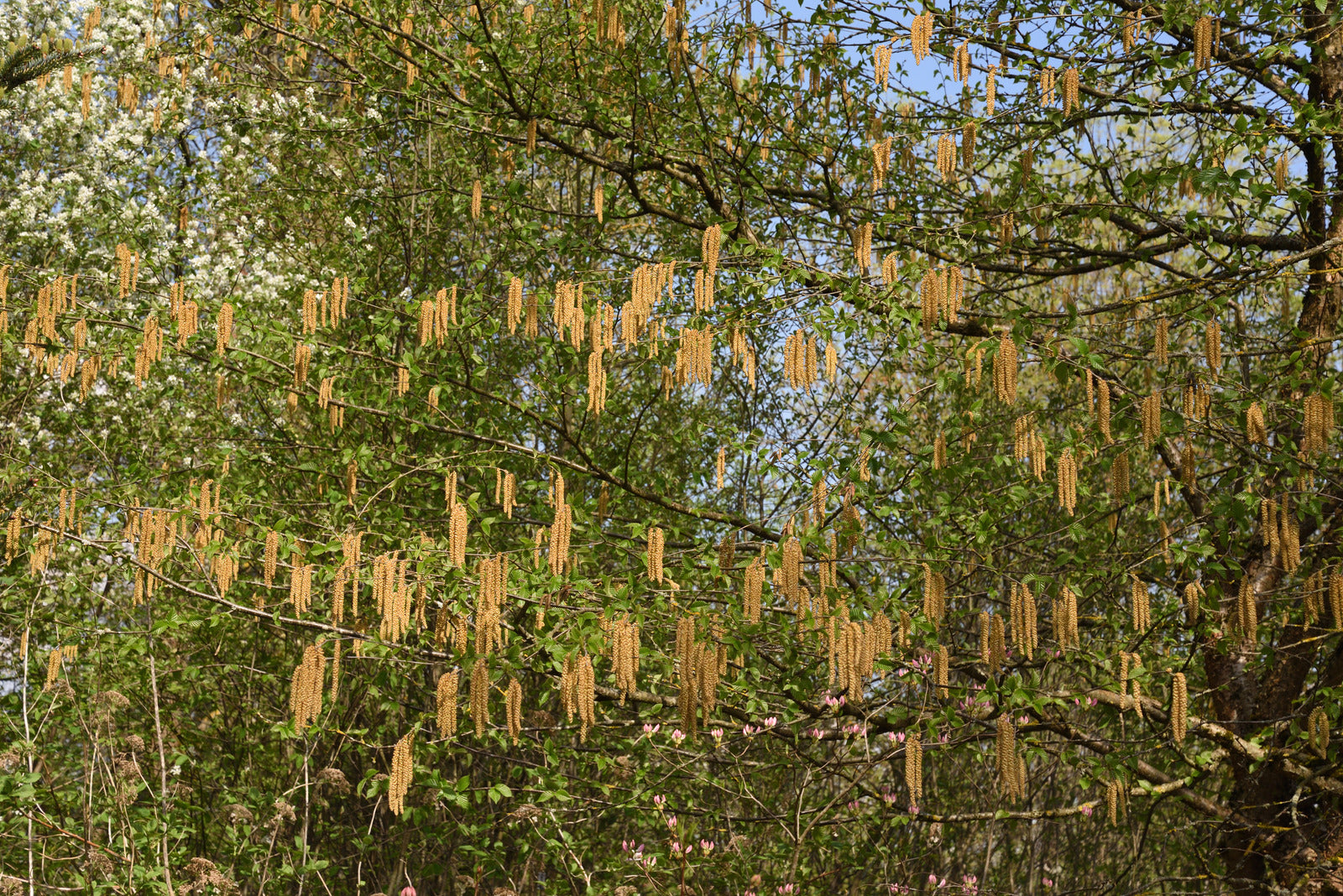BETULA ALLEGHANIENSIS / YELLOW BIRCH
- Regular price
-
$24.95 CAD - Regular price
-
- Sale price
-
$24.95 CAD
Couldn't load pickup availability
Delivery Fees
Delivery Policy
Enjoy FREE delivery on all orders over $149!
For orders between $80 and $149, a $18.99 delivery fee will apply.
Orders under $80 will be prompted to add more items to your cart.
BETULA ALLEGHANIENSIS / YELLOW BIRCH
A Majestic Tree with Golden Yellow Bark and Sweet-Scented Twigs
Betula alleghaniensis, commonly known as Yellow Birch, is a large, deciduous tree that stands out for its beautiful golden-yellow bark and graceful growth habit. Native to northeastern North America, this tree thrives in cooler climates and is perfect for adding both beauty and shade to larger landscapes. Its distinctive bark, combined with its attractive foliage and tolerance to a variety of soil conditions, makes Yellow Birch a valuable addition to woodlands, gardens, and parks.
Why Choose Yellow Birch?
-
Striking Golden Yellow Bark: The smooth, shiny bark turns golden-yellow with age, providing year-round visual interest.
-
Sweet-Scented Twigs: When scratched, the twigs emit a pleasant, wintergreen scent, adding an aromatic touch to the landscape.
-
Large, Spreading Shade Tree: Excellent for providing shade and shelter in larger gardens or parks.
-
Wildlife-Friendly: Provides food and shelter for various wildlife, including birds, squirrels, and insects.
Key Features
-
Bark Color: Smooth, silvery-yellow bark that turns golden with age, peeling in layers for a unique visual effect.
-
Foliage: Green, oval leaves with serrated edges that turn vibrant yellow in fall.
-
Growth Habit: A tall, upright tree that typically grows 40–60 feet tall and 25–40 feet wide with a rounded crown.
-
Hardiness: Tolerates cold climates and thrives in USDA Zones 3–7.
Specifications
-
Plant Size: Typically grows 40–60 feet tall and 25–40 feet wide.
-
Hardiness: USDA Zones 3–7, ideal for cooler climates.
-
Sunlight: Prefers full sun to partial shade for best growth.
-
Soil Requirements: Well-drained, moist, acidic to neutral soils; tolerant of a variety of soil types once established.
Ideal Uses
-
Shade Tree: Perfect for providing shade in larger gardens, parks, or along streets.
-
Woodland Gardens: Its native roots make it an excellent choice for woodland gardens or naturalized landscapes.
-
Erosion Control: The deep root system helps prevent soil erosion in areas with sloped terrain.
-
Wildlife Habitat: A great tree for attracting and supporting local wildlife, including birds, insects, and mammals.
Betula alleghaniensis, or Yellow Birch, is a majestic tree that brings beauty, shade, and ecological benefits to any landscape. With its striking golden bark, aromatic twigs, and wildlife-friendly qualities, it is a standout choice for larger gardens, woodlands, and parks.
NATIVE TO ONTARIO
Care Instructions
Different plants have different watering needs. Check the soil moisture by inserting your finger about an inch into the soil. If it feels dry, water the plant until the water drains from the bottom of the pot. Avoid overwatering, as it can lead to root rot.

BETULA ALLEGHANIENSIS / YELLOW BIRCH
- Regular price
-
$24.95 CAD - Regular price
-
- Sale price
-
$24.95 CAD


